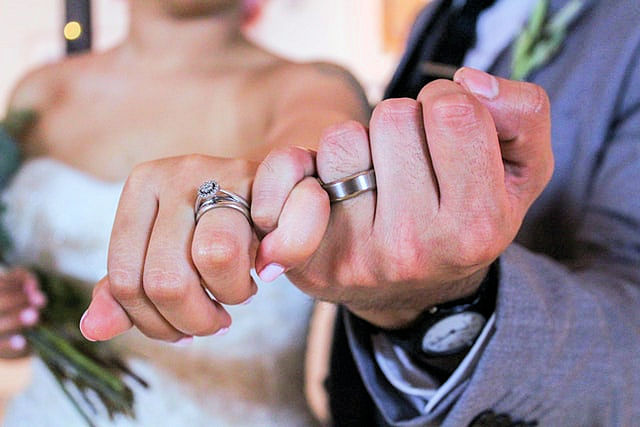Left or Right? Which Side is Correct for Your Wedding?
Categories: | Wedding Ceremony | Wedding Traditions
 Which side is "correct" in a wedding
depends on what we are talking about - flowers,
rings, or seating. Having said that, let me
reassure you that there are no laws, and no actual
rules, though a lot of people will lead you to
believe that there are! Which side, left or right,
for flowers, rings, or where people sit comes down
to just practice and local custom, in Australia,
based on what Queen Victoria did in her wedding, or
the way the English aristocracy did it in the 19th
century, so you feel free to make a different
decision. It is the 21st century after all.
Which side is "correct" in a wedding
depends on what we are talking about - flowers,
rings, or seating. Having said that, let me
reassure you that there are no laws, and no actual
rules, though a lot of people will lead you to
believe that there are! Which side, left or right,
for flowers, rings, or where people sit comes down
to just practice and local custom, in Australia,
based on what Queen Victoria did in her wedding, or
the way the English aristocracy did it in the 19th
century, so you feel free to make a different
decision. It is the 21st century after all.Left or Right? Who sits on
which side?
Contemporary ceremonies are different. There is usually much less space between the couple and the front row of chairs. The couple faces the guests and they turn to face one another for their vows. Which means that anyone sitting in the front row or two is not going to see both their faces. So I always suggest that the parents swap sides - the groom's family sitting on the bride's side and vice versa. That way they at least get to see the face of their own child during the exchange of vows.
As for everyone else. Free seating is the go. It is much more important to have the seats equally filled on both sides that to differentiate who belongs to who. It is also much better for the photos.
Left or Right? Which side
do you pin the flowers?
For corsages, usually provided for the mothers and grandmothers, they go on the right shoulder.
In addition to left and right, there is up and down. Men's flowers have the stem pointing down, a tradition inherited from the days when the stem was inserted into the buttonhole. Women's flowers have the stem pointing up. There is a practical reason for this. While the boutonniere is traditionally one flower, perhaps with a bit of foliage added, a corsage is either a very large flower or several flowers, with the addition of foliage and perhaps ribbon. So a corsage is much heavier that a boutonniere. It would flop if pinned stem down.
Left or right? Which hand
do the rings go on?
But other countries and cultures regard the right hand as the correct one. But here's the thing. Rings are not a legal requirement, either for your marriage ceremony or to designate your marital status to the world. So whether you choose to wear your ring on the left or right hand, whether you decide to wear your ring on your ring finger or a different finger, or indeed whether you even exchange rings at all, is up to you.
I've had couples who chose a different finger - middle finger, or little finger (pinky) are not uncommon choices. And quite a few couples choose to go with their cultural heritage and place the rings on their right hands. When it comes to intercultural weddings, it is not uncommon to see one right hand, one left hand.
Being practical
- For the flowers, make the decision and
then make sure that everyone who needs to know
is informed well ahead of time. This starts with
your florist. As foliage backing boutonnieres is
often slightly angled to what will be the
outside edge, and florists always assume that
they will be pinned on the left lapel.
- For the couple. While generally the
bride stands on the left, if some detail of your
dress or hairpiece is on your left side, so it
would be hidden when you turn to face one
another for your vows, of course you can swap
sides with your groom. Just don't forget to tell
your celebrant and your photographer!
- For the seating, let your venue and stylist know that you are swapping the parents from the traditional side so that reserved signs can be correctly placed. While we tend no longer to hear "bride's side or groom's" side asked at the door as people enter, assuring people that they can sit anywhere is a good idea. You can use a sign, or just have a couple of helpful greeters.
- For the rings, make the decision early and have your rings sized accordingly. And make sure you tell your celebrant about your decision to avoid whispered directions on the day being incorrect.
Thanks for reading!
you 0 Things
